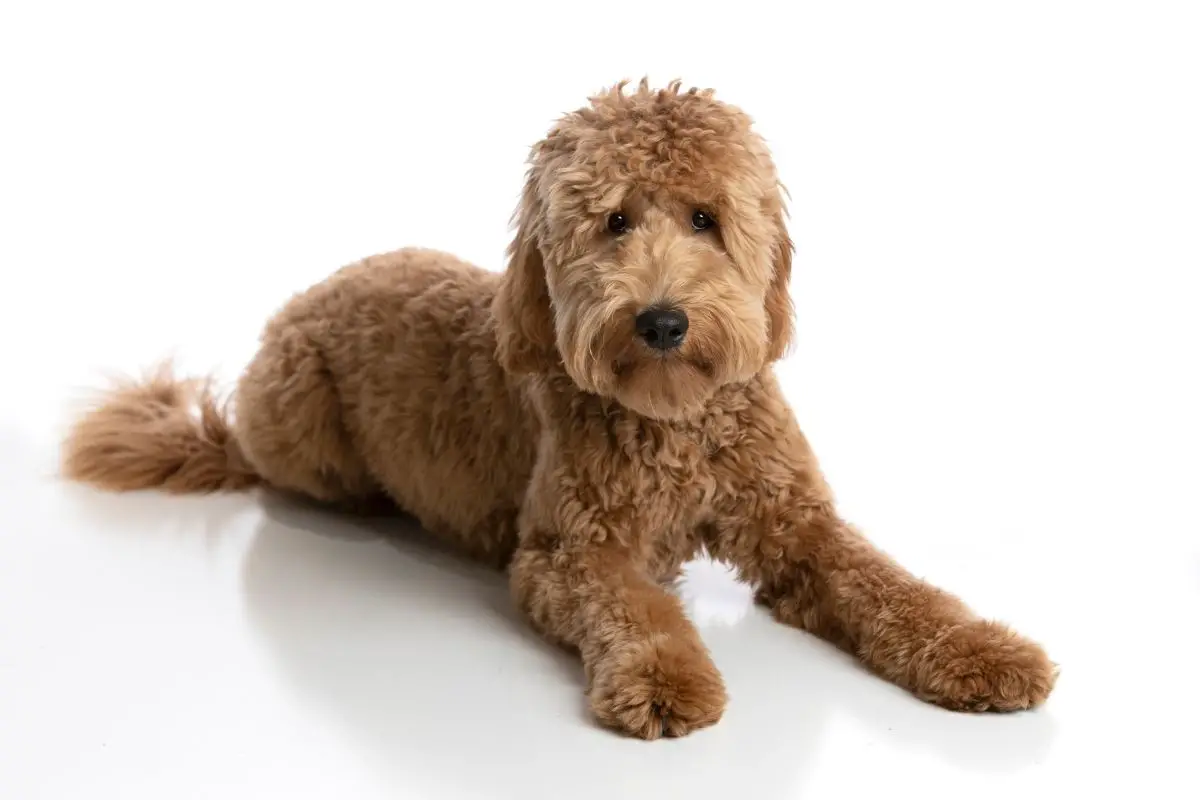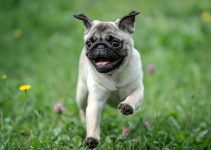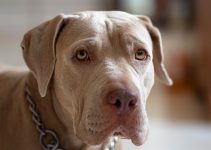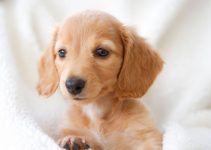Goldendoodles are an adorable dog to have around the home. This breed is of course a crossbreed between the pedigree breeds Golden Retriever and a Poodle.
These two breeds have been crossed to get the best of both worlds: the loving nature of a Golden Retriever, and the lack of shedding of a Poodle.
They have been combined in the hopes of creating a hypoallergenic dog.
For those of you who have looked into getting yourself a Goldendoodle as your next pet, things can get a little confusing.
There are other terms used to describe certain types of Goldendoodles, which include F1, F1b, F1bb, and F2. All of these terms refer to a specific generation of Goldendoodles.
But what do all of these terms actually mean? Today, we’re going to cover everything you need to know about Goldendoodle generations.
Even though we are using the Goldendoodle as an example, this theory also holds true for other versions of doodles, such as Sheepadoodles and Bernedoodles.
So let’s take a closer look at what these terms mixing confusing letters and numbers actually mean!
Contents
A Poodle Crossed With A Golden Retriever Is An F1
So the very first thing that we need to understand is of course what the letter F represents in the term F1. “F” stands for “filial”, which is basically a fancy word for a generation.
This makes the numbers which follow the letter F fairly self-explanatory, with F1 representing a first generation Goldendoodle.
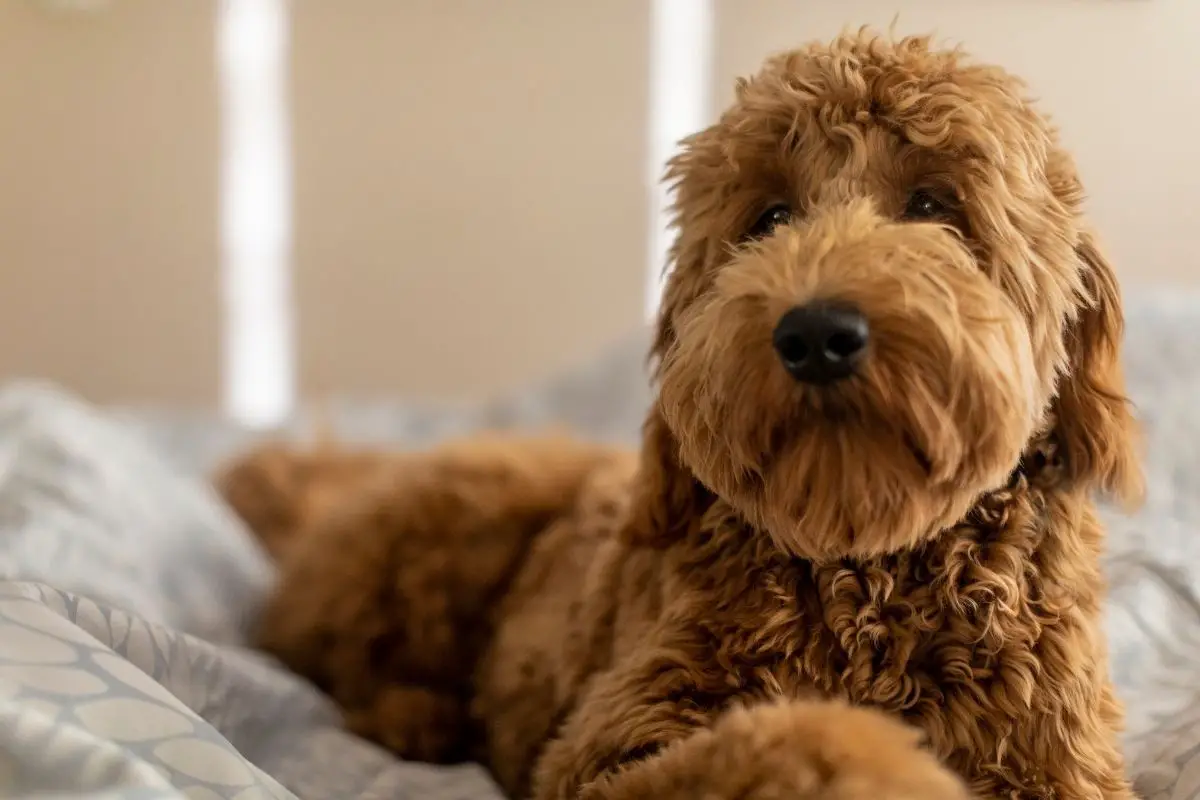
So the term F1 Goldendoodle is basically the puppy that is created from the first crossing of a purebred Poodle and a purebred Golden Retriever.
An F1 Goldendoodle is an excellent choice for those who want to have the excellent traits from the original Golden Retriever parent that was partnered up to the Poodle parent.
This can include both physical traits and personality traits that you would wish to pass on to the F1 Goldendoodle from their purebred parents.
Even though the F1 Goldendoodle has been bred to try to avoid the excessive shedding that can occur with their Golden Retriever parents to have a more hypoallergenic coat, they will still shed a little.
This shedding will of course be less than a standard Golden Retriever, but perhaps more than is first associated with a generation of Goldendoodle.
What’s The Difference Between An F1 And An F2 Goldendoodle?
But what about other filial generations of Goldendoodle? There is more than just the term F1 Goldendoodle used to describe this particular crossbreed of dog.
So how does an F1 Goldendoodle differ from an F2 Goldendoodle?
Whereas an F1 Goldendoodle refers to the first filial generation of a cross between the Golden Retriever and Poodle parents, an F2 Goldendoodle is basically where two Goldendoodles have been bred together.
This is also known as a second generation cross, as it’s the second generation of Goldendoodles to be bred.
When comparing the genetics of an F2 Goldendoodle, you should still typically see an even split between the two.
This will mean they will show as being roughly half Poodle and half Golden Retriever.
Because the genetic split is still pretty much even, the F2 Goldendoodle will still shed a bit more than their Poodle grandparents.
In fact, in terms of their coat condition, F2 Goldendoodles tend to be a bit more unpredictable. This is because they could gain 2 versions of the flat coat gene which they got from their Golden Retriever grandparents.
This will of course make them more likely to shed than an F2 Goldendoodle that inherited the curly coat from their Poodle grandparents.
If you’re flexible when it comes to the coat of your F2 Goldendoodle and still love the personalities of both Poodles and Golden Retrievers, then the F2 generation will be the perfect match for you and your family.
What’s The Difference Between An F1 And A F1b Goldendoodle?
So now that we know that an F1 Goldendoodle represents the first generation crossbreed dog between Golden Retriever and Poodle parents, we need to understand more about additional letters that can be used to describe other types of Goldendoodles.
What about a F1b Goldendoodle? And how does this compare to an F1 Goldendoodle? A F1b Goldendoodle is a dog that has been bred back with a purebred parent, which is more often than not a poodle.
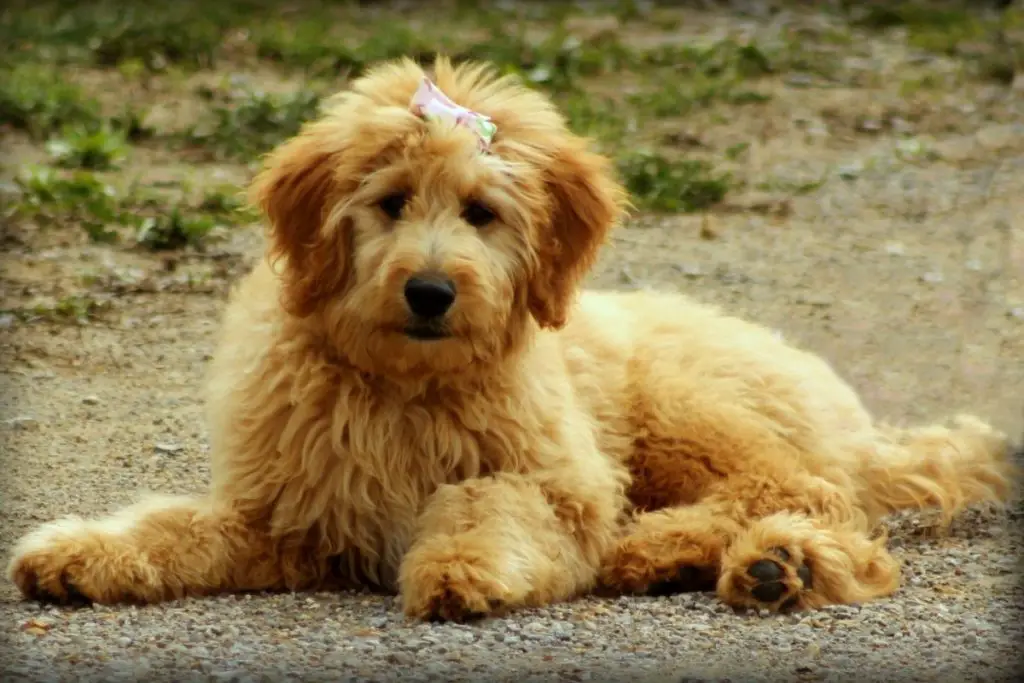
So an F1 Goldendoodle will have been bred with a Poodle parent to give you a puppy that is more Poodle than Golden Retriever.
So a F1b Goldendoodle will be around 1 quarter Golden Retriever, and 3 quarters Poodle. The “b” stands for “back cross”.
We know that Goldendoodles can show a variety of coat types, so with this differing split to F1 and F2 breeding, we also know that F1b Goldendoodles tend to have a wavy coat or curly coat, due to the higher percentage of Poodle gene in this specific Doodle breed.
This also means that they are less likely to shed their fur than an F1 or F2 Doodle.
Of course, just as an F1 Doodle can be bred back with a purebred parent to get the F1b Doodle, and F2 Doodle can also be back bred with a Poodle parent.
This would then give us a F2b puppy, which would still have more Poodle genes than Golden Retriever genes.
You can of course back breed an F1 or F2 Doodle with a Golden Retriever, however, this wouldn’t achieve the lesser shedding that back breeding is typically used for.
What’s The Difference Between A F1b And A F1bb Goldendoodle?
We’re sure you’ve got the hang of all the different terms used to describe various generations of Goldendoodle by now, but we just want to cover one more Doodle generations cross-breed before we wrap up.
We now know that a F1b Goldendoodle has an F1 generation parent that has been back bred with a Poodle parent.
So ultimately the more letter “b’s” that are included after the F1 number indicate how many additional Poodles have been bred into the equation.
So a F1bb Doodle is simply a F1b Doodle that has been bred with yet another Poodle. This gives them a genetic percentage of around 12% Golden Retriever, and 88% Poodle.
This basically results in a Doodle that have a much curlier coat, and will generally shed a lot less than their Golden Retriever ancestors.
It is thought that this makes them a better fit for those who suffer from dog allergies.
One thing to bear in mind however is that with fewer Golden Retriever genes, they will also have less personality traits associated with this breed, and will typically display more Poodle characteristics.
It will be important to ask your chosen breeder about the parents of the puppy you are interested in so that you can get a clearer picture of what their gene pool looks like.
What’s An F3 Goldendoodle?
The term F3 Goldendoodle is often used to describe generations of Doodles that go beyond the F2 classification. This is also described as multigenerational to avoid any kind of confusion.
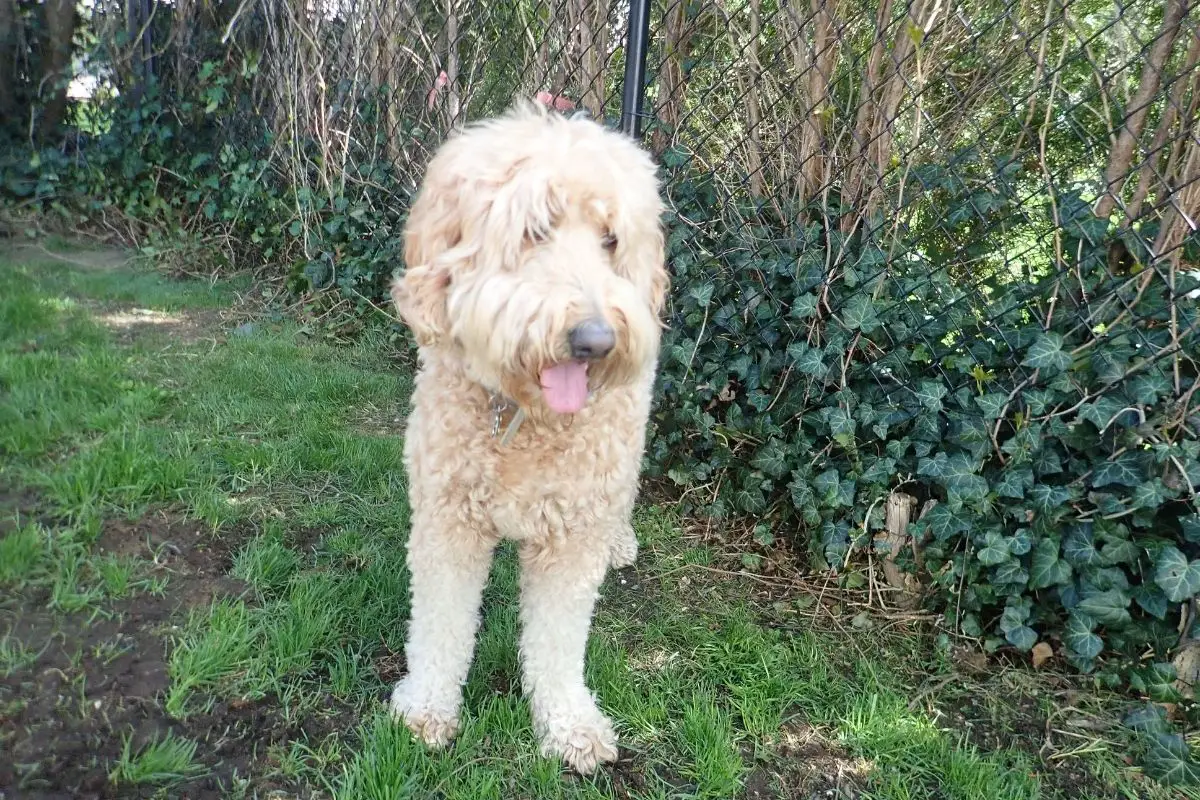
An F3 Goldendoodle is basically showing that your Doodle is 3 generations beyond the original purebred parents.
Even though an F3 Doodle could still be classed as an F2 Doodle that was crossed with another Doodle, the average responsible breeder will aim to have avoided breeding a dog that is a heavy shedder, and will instead be a light shedder at most.
So if you choose an F3 Doodle to get the 3rd generation offspring, you can typically expect a dog that has a wavy or curly coat, and is usually a light shedder.
This 3rd generation offspring will typically have fewer Golden Retriever genes than Poodle genes for this purpose.
In Summary
And there you have it! You now know everything there is to know about the different generations of Goldendoodle.
Words like F1 Doodle, F2 Goldendoodle, F1b Goldendoodle, and F1bb Goldendoodle will no longer be as mystifying to you.
We now understand that this combination of numbers and letters actually refers to several generation Doodles.
Even though the Goldendoodle has been bred to have a hypoallergenic coat, this can depend on the generation of the Doodle and their breed percentage breakdown.
First generation Doodles will actually have an even split of Golden Retriever traits and Poodle traits.
If you love the Golden Retriever traits in a Goldendoodle, then either the F1 Goldendoodle or F2 Goldendoodle will be the perfect fit for you and your family.
If you are particularly concerned about choosing a pet that has a hypoallergenic coat, then you may wish to opt for a Goldendoodle that is either F1b or F1bb.
It’s important to remember that even though Goldendoodles are said to have a hypoallergenic coat, this won’t be the best for severe allergies, as the allergen is actually in the dog’s saliva rather than their coat type.
So you now know how to select the best Goldendoodle for your home! Make sure to always select your new pet from a reputable breeder.
Continue reading our Dogs Section to learn more interesting facts about dogs.
